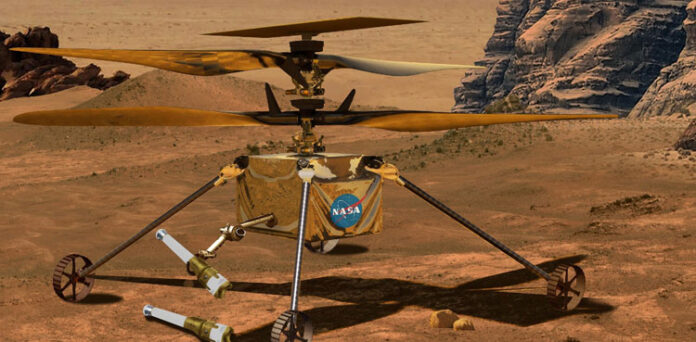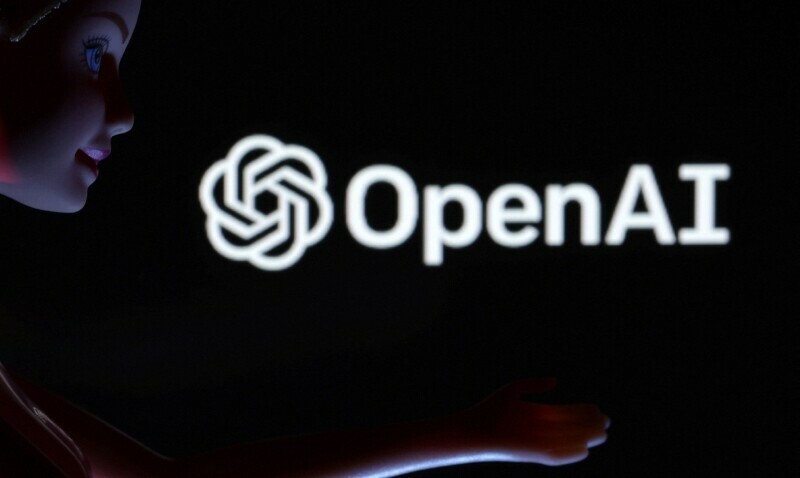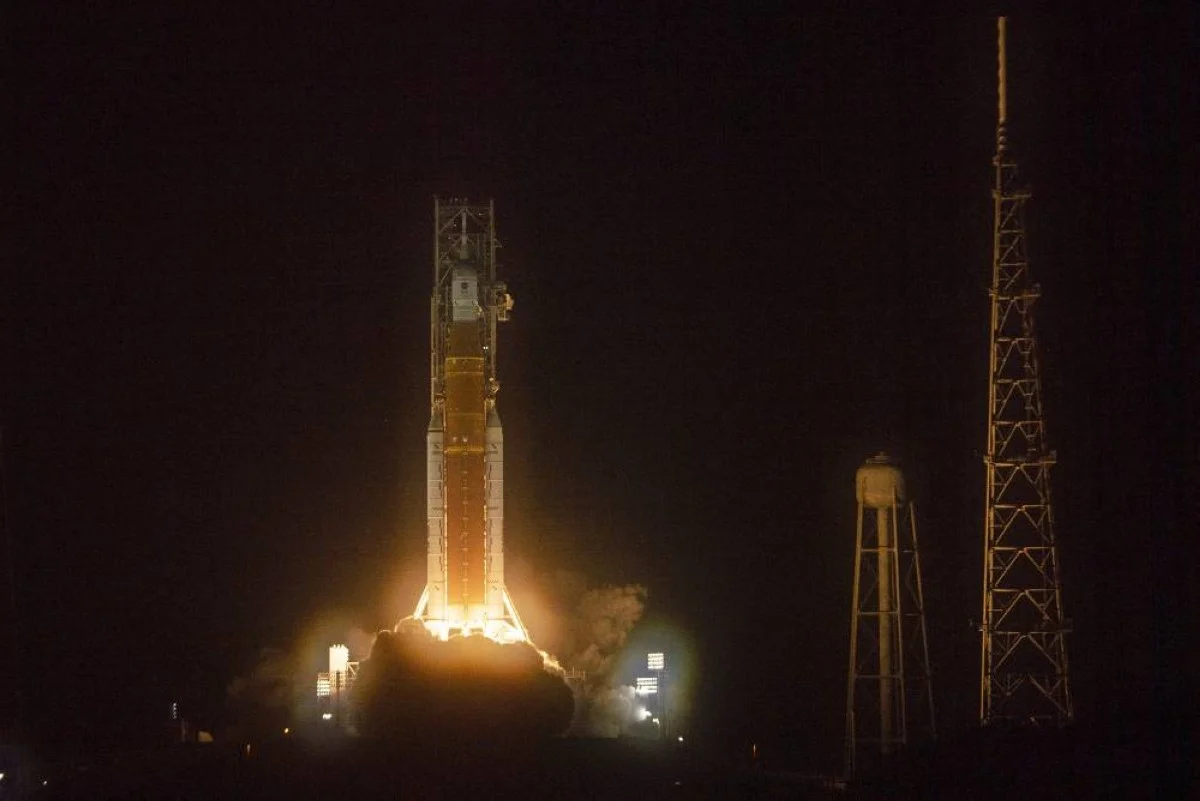Science & Technology


Study demonstrates an exciting new approach to predicting, analysing trajectory of people’s life, researcher says
Researchers have unlocked yet another artificial intelligence (AI) ability which, though intriguing, may not be as amusing as previous discoveries about the technology have been.
A recent study in Nature Computational Science suggests that a new AI system that treats human lives like language may be able to accurately predict death within a certain period, among other life details.
As part of the research, Danish researchers developed a machine-learning model called life2vec, which can predict people's life details, including death, international moves, and personality traits.
The model uses data from millions of residents, including birth dates, sex, employment, location, and use of the country's universal healthcare system.
Over four years, the model was found to be over 78% accurate in predicting mortality, outperforming other predictive methods like actuarial tables and machine-learning tools.
Life2vec showed promising early signs of connecting personality traits with life events, with a 73% accuracy rate in predicting people's move out of Denmark and self-reported responses to a personality questionnaire in a separate test.
The study demonstrates an exciting new approach to predicting and analysing the trajectory of people’s life, says Matthew Salganik, a professor of sociology at Princeton University, who researches computational social science.
The life2vec developers "use a very different style that, as far as I know, no one has used before," he says.
Lehmann and his team developed a language processing tool called life2vec, which can predict people's future by processing individuals' data into unique timelines of events like salary changes and hospitalisations.
The flexible model architecture allows for easy tweaking and fine-tuning offering predictions about many unexplored aspects of human life, making life2vec a promising tool for future prediction.
Lehmann says medical professionals have already contacted him to ask for help in developing health-related versions of life2vec—including one that could help illuminate population-level risk factors for rare diseases, for example.
He plans to use a tool to uncover hidden societal biases, such as unexpected connections between professional advancement and age or country of origin, and to explore the impact of relationships on quality of life and salary, as well as uncover hidden societal biases.

LOS ANGELES: Nasa’s rover Perseverance has gathered data confirming the existence of ancient lake sediments deposited by water that once filled a giant basin on Mars called Jerezo Crater, according to a study.
The findings from ground-penetrating radar observations conducted by the robotic rover substantiate previous orbital imagery and other data leading scientists to theorize that portions of Mars were once covered in water and may have harbored microbial life.
The research, led by teams from the University of California at Los Angeles (UCLA) and the University of Oslo, was published in the journal Science Advances.
It was based on subsurface scans taken by the car-sized, six-wheeled rover over several months of 2022 as it made its way across the Martian surface from the crater floor onto an adjacent expanse of braided, sedimentary-like features resembling, from orbit, the river deltas found on Earth.
Soundings from the rover’s RIMFAX radar instrument allowed scientists to peer underground to get a cross-sectional view of rock layers 65 feet deep, “almost like looking at a road cut,” said UCLA planetary scientist David Paige, the first author of the paper.

Barely a month after Pakistan Tehreek-i-Insaf (PTI) employed artificial intelligence (AI) to generate an audio speech of incarcerated former Prime Minister Imran Khan for an online rally, social media platforms have become awash with AI-produced voiceovers of political figures.
From AI-created songs to promotional images, the rise of free AI voice-cloning and image-editing tools has turned electioneering into a steady stream of campaign materials created by the technology, introducing a new playbook for digital politics.
Previous national elections have showcased the increasing sophistication of digital political campaigns, featuring tactics such as creating fake accounts, running coordinated hashtag trends, developing customized mobile apps, as well as staging grand social media “conventions”. With Pakistan heading into its largest digital election in February, political parties are tempted to push the envelope and explore different ways to wage the technology’s recent intrusion into politics.
“We used AI to create content for Nawaz Sharif’s arrival campaign ahead of his Minar-i-Pakistan jalsa in October,” Muzakir Ijaz, a digital media consultant leading PML-N’s digital strategy, told Dawn.
There is a difference between reality and AI-generated content. We had to go over 36 iterations in Urdu to reach 65pc diction accuracy. People can tell it’s not real —
Jibran Ilyas, PTI’s social media lead
“AI is useful for generating image content but it is not good at integrating Urdu yet so our use is limited,” said Ijaz, adding that he onboarded a team of 30 digital media professionals to support PML-N’s election campaigning.
While the use of AI may be cost-effective for social media teams, who would otherwise require expensive experts to analyse data and create promotional campaigns, the dissemination implications may be troubling.
Last year, an altered video of Imran Khan purportedly showed him with his eyes closed, raising alarm among his supporters about his treatment in prison. The 26-second clip was posted on X, formerly known as Twitter, where it received more than 500 shares. An AFP fact-check found that the altered video appeared to use a “closed-eyes filter”, which gave the illusion that Khan’s eyes were shut.
“The implications of AI use are concerning,” said Nighat Dad, Executive Director of the Digital Rights Foundation (DRF). “Political parties are using AI to influence the mindset of voters who are not digitally literate and politically charged. How will they tell apart what is genuine media and what is synthetic media?”
Ms Dad, who is also a member of the UN’s Advisory Body on AI, warned questions about ethics on the use of AI were yet unanswered. “In this context, the use of AI can lead to erosion of the public’s trust in the integrity of the information they consume,” she said.
“The good thing is there is a difference between reality and AI-generated content,” Jibran Ilyas, PTI’s social media lead told Dawn.
“We had to go over 36 iterations in Urdu to reach 65pc diction accuracy. People can tell it’s not real,” he said.
Ilyas said PTI was mindful of AI’s use and added a clear disclaimer to Khan’s online rally audio flagging it as the “AI voice of Imran Khan based on his notes”.
“We are testing a lot of ways to use AI but also considering ethics. We might consider another Khan speech right before the polling day,” he said, adding that the party would be focusing on TikTok for the days leading up to the elections given its popularity among the youth and rural areas.
Digital literacy at a glance
The number of internet users in Pakistan has increased significantly since the last national elections in 2018. According to PTA, in 2018, there were 55 million mobile broadband subscribers and 58 million broadband internet users, but by November 2023, there were 126 million mobile broadband users and 129 million broadband internet users (54 per cent of the population).
Given the significant growth in digital access, the Election Commission of Pakistan (ECP) has for the first time extended its code of conduct for national elections to digital media and social media influencers. The code prohibits the dissemination of content that is prejudicial to Pakistan’s ideology, sovereignty, dignity, or security, or that harms national solidarity or creates law and order problems.
Despite working with tech platforms on digital literacy initiatives in the lead-up to the polls, the ECP does not offer any guidelines or accountability on the funding and responsible use of technology by political parties for campaigning.
According to the latest study on how university students understand disinformation by Freedom Network for the Coalition Against Disinformation (CAD), most young people (63pc of the respondents) believe they come across disinformation on the Internet every day and that disinformation poses a threat to democracy and elections (62pc).
“The value of truth has eroded,” said Amber Rahim Shamsi, Director of the Center of Excellence in Journalism (CEJ) at the Institute of Business Administration (IBA). “We conducted digital literacy workshops in 13 universities for 800 students around Pakistan. Across the board, we found young people are still not able to recognize the difference between fact and propaganda,” she said.
Shamsi and her team recently launched a non-partisan fact-checking initiative, iVerify, to advance the scope of independent and unbiased reporting in the country’s journalistic landscape. “Since 2018, media organisations have become more conscious of fact-checking. However, none of the students we spoke to are aware of these [fact-checking] efforts. There is still a lot that needs to be done.”

WASHINGTON: Nasa has re-established contact with its tiny helicopter on Mars, the US space agency said on Saturday, after an unexpected outage prompted fears that the hard-working craft had finally met its end.
Ingenuity, a drone about 1.6 feet tall, arrived on Mars in 2021 aboard the rover Perseverance and became the first motorised craft to fly autonomously on another planet.
Data from the helicopter are transmitted via Perseverance back to Earth, but communications were suddenly lost during a test flight on Thursday, Ingenuity’s 72nd lift-off on Mars.
“Good news today,” Nasa’s Jet Propulsion Laboratory (JPL) wrote on X, formerly Twitter, late Saturday.
The agency said contact had finally been made with the copter by commanding Perseverance to “perform long-duration listening sessions for Ingenuity’s signal.”
“The team is reviewing the new data to better understand the unexpected comms dropout during Flight 72,” it added.
Nasa previously said that Ingenuity had attained an altitude of 40 feet on Flight 72, which was a “quick pop-up vertical flight to check out the helicopter’s systems, following an unplanned early landing during its previous flight.”
But during its descent, “communications between the helicopter and rover terminated early, prior to touchdown,” the agency said.

ChatGPT maker OpenAI has said it will introduce tools to combat disinformation ahead of the dozens of elections this year in countries that are home to half the world’s population.
The explosive success of text generator ChatGPT spurred a global artificial intelligence revolution but also triggered warnings that such tools could flood the internet with disinformation and sway voters.
With elections due this year in countries including the United States, India and Britain, OpenAI said on Monday it will not allow its tech — including ChatGPT and the image generator DALL-E 3 — to be used for political campaigns.
“We want to make sure our technology is not used in a way that could undermine” the democratic process, OpenAI said in a blog post.
“We’re still working to understand how effective our tools might be for personalised persuasion,” it added.
“Until we know more, we don’t allow people to build applications for political campaigning and lobbying.”
AI-driven disinformation and misinformation are the biggest short-term global risks and could undermine newly elected governments in major economies, the World Economic Forum warned in a report released last week.
Fears over election disinformation began years ago, but the public availability of potent AI text and image generators has boosted the threat, experts say, especially if users cannot easily tell if the content they see is fake or manipulated.
OpenAI said on Monday it was working on tools that would attach reliable attribution to text generated by ChatGPT, and also give users the ability to detect if an image was created using DALL-E 3.
“Early this year, we will implement the Coalition for Content Provenance and Authenticity’s digital credentials — an approach that encodes details about the content’s provenance using cryptography,” the company said.
The coalition, also known as C2PA, aims to improve methods for identifying and tracing digital content. Its members include Microsoft, Sony, Adobe and Japanese imaging firms Nikon and Canon.
‘Guardrails’
OpenAI said ChatGPT, when asked procedural questions about US elections such as where to vote, will direct users to authoritative websites.
“Lessons from this work will inform our approach in other countries and regions,” the company said.
It added that DALL-E 3 has “guardrails” that prevent users from generating images of real people, including candidates.
OpenAI’s announcement follows steps revealed last year by US tech giants Google and Facebook parent Meta to limit election interference, especially through the use of AI.
AFP has previously debunked deepfakes — doctored videos — of US President Joe Biden announcing a military draft and former secretary of state Hillary Clinton endorsing Florida Governor Ron DeSantis for president.
Doctored footage and audio of politicians were circulated on social media ahead of the presidential election this month in Taiwan, AFP Fact Check found.
While much of this content is low-quality and it is not immediately clear if it is created with AI apps, experts say disinformation is fuelling a crisis of trust in political institutions.

Private US lunar lander mission is doomed to fail, and NASA pushes back plans to return astronauts to the Moon. The twin developments Tuesday represent blows to America’s ambitions to stimulate a commercial space economy, develop a lasting presence on Earth’s nearest neighbor, and use it as a jump off point for Mars. China meanwhile is looming in the rear view mirror, targeting 2030 for a crewed landing.
Astrobotic’s Peregrine Lunar Lander blasted off Monday from Florida’s Cape Canaveral Space Force Station, then successfully separated from its rocket. Just hours later, though, Astrobotic reported an inability to orient Peregrine’s solar panel towards the Sun and keep its battery topped up. A propulsion system glitch was found to be causing a critical loss of fuel and damaging the spacecraft’s exterior.
The company said Monday the mission had “no chance of soft landing”—dashing hopes for the first ever successful landing by a non-government mission, and America’s first soft touchdown on the Moon since Apollo 17 in 1972. NASA has paid Astrobotic more than $100 million to ship scientific hardware to the Moon to answer questions about surface composition and radiation, as the US space agency prepares to send astronauts back for long term missions.
The failure doesn’t mean the strategy of ramping up commercial partnerships is innately flawed, Michael Lembeck, a former NASA official turned associate professor in aerospace engineering at the University of Illinois told AFP. “It’s a balance of making progress versus accepting risk—and I think in the long term these failures are just as informative success,” he said, adding NASA’s contracts with other companies, including Houston-based Intuitive Machines, which will attempt to launch a lander next month, helped spread such risks.
Artemis safety issues
But, further spoiling the mood for space watchers, NASA Administrator Bill Nelson announced the agency was pushing back its planned return of astronauts to the lunar surface from December 2025 to September 2026, citing safety issues with the Orion crew capsule. And few analysts believe the new date for American boots on the Moon is credible.
In a briefing Tuesday, NASA officials went into new detail about concerns linked to the Orion capsule built by Lockheed Martin. First, the uncrewed Artemis 1 mission revealed the heat shield lost some of its material during its fiery reentry to the atmosphere.
Second, a design flaw has been uncovered during new testing in Orion’s ability to open and shut valves connected to the life support system—described by Amit Kshatriya, deputy associate administrator for the Moon to Mars program—as “unacceptable.” Third, when engineers put the vehicle under stress testing to simulate an emergency ejection from the Space Launch Systems (SLS) rocket, they found a battery became disconnected, meaning Orion might not be able to maintain power as it floats back to the ground.
SpaceX complications
While it’s back to the drawing board for Orion, its issues are dwarfed by the fact that the Artemis 3 lander, a modified version of SpaceX’s next-gen Starship rocket, is nowhere near ready, having exploded in its two orbital test flights to date. Even once Starship stops blowing up, SpaceX will have to succeed in its own uncrewed lunar landing ahead of Artemis 3.
Its complex plans involve launching a spaceship to serve as a fuel depot, having 10 more Starships launch and fuel up the depot, then having yet another Starship collect that fuel and journey to the Moon, where it would dock with an Orion capsule and fly down to the surface.
Given these constraints, the new deadline is far from realistic, said Lembeck, stressing that compared to the Apollo years, NASA is working to a much tighter budget, in a more risk-averse era, without a national imperative to beat the Soviet Union. — AFP

Integration of GraalVM runtime allows developers to write JavaScript programs inside the MySQL database server.
Oracle has introduced JavaScript support in the MySQL database, allowing developers to write JavaScript stored programs, i.e. JavaScript functions and procedures, in the MySQL database server.
The capability was announced on December 15, 2023. The JavaScript stored programs will be run with the GraalVM, which provides an ECMAScript-compliant runtime to execute JavaScript programs. Developers can access this MySQL-JavaScript capability in a preview in MySQL Enterprise Edition, which can be downloaded via Oracle Technology Network (OTN). MySQL-JavaScript also is offered in the MySQL Heatwave cloud service in Oracle Cloud Infrastructure (OCI), AWS, and Microsoft Azure.
Oracle said that JavaScript provides a simple syntax, support for modern language features, and a rich ecosystem of reusable code modules, while open source MySQL will be a “natural choice” of database for JavaScript developers. Support for JavaScript stored programs will improve MySQL developer productivity by leveraging an ecosystem with more developers able to write stored programs. These programs offer an advantage by minimizing data movement between the database server and applications.
MySQL-JavaScript unlocks opportunities in application design that once were constrained by a tradeoff, Oracle said. JavaScript stored programs let developers sidestep data movement and implement advanced data processing logic inside the database. Oracle cited use cases such as data extraction, data formatting, data validation, data compression and encoding, and data transformation, such as converting a column of strings into a sparse-matrix


